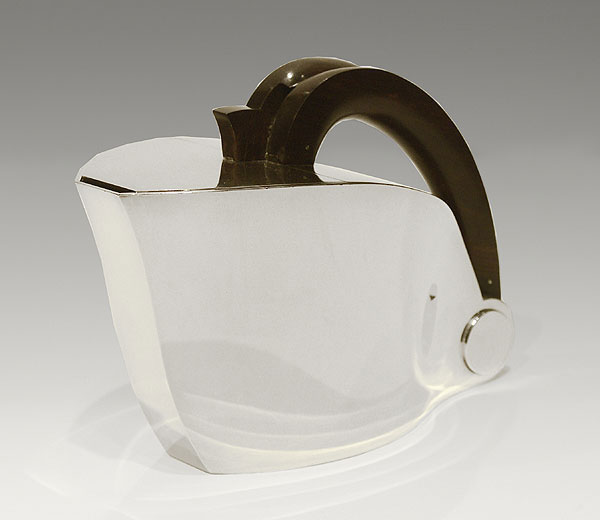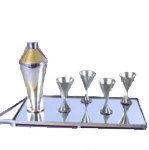
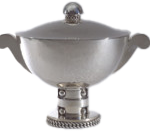
Silver objects of earlier periods are prized for their intricate forms, and the various surface embellishments of piercing, carving, chasing and other techniques. Art Deco silver and metal, however, is characterized by the total absence of this kind of surface decoration, relying instead on purity of line and perfectly polished surfaces for drama and style.
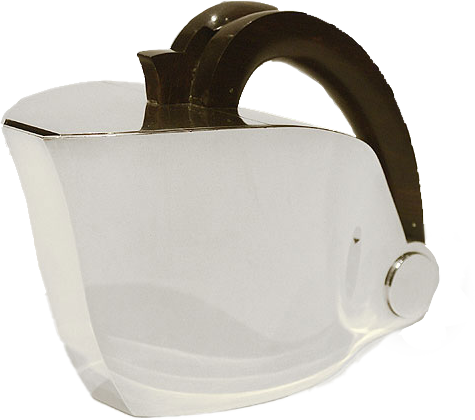
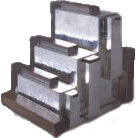
The great Art Deco designers did not rely on historical references, but took their inspiration directly from the esthetics of Cubism and the Machine Age. The greatest designs reflect the fascination with the modern, sleek, highly polished white metal surfaces of machines, and also a new means of transportation – the airplane. Trains and boats were also being designed with this new and modern look.
Because of the absence of color, silver is sometimes considered a “dry” material, and to give it life without relying on surface ornamentation, the designers relied on the interplay of light, shadow, and reflection created by contrasting planes and curved, polished surfaces.


To add “warmth” to the coolness of silver and white metals, designers used rare woods, semi-precious stones, ivory, horn and other materials. Going into the 1930’s, thin plates of gold might be incorporated into the designs, or certain sections plated with a layer of gold. These elements, when used by master designers, added richness and textural interest without taking away from the purity of design.

Items of luxury created solely to be admired need only be concerned with esthetics. Articles intended for functional use, regardless of period, still had to address practical issues. Styles change, but human bodies do not. We still have to grasp things by handles, pour from spouts, and cut with knives. The Art Deco silver designers, disdaining influences from the past, had to approach these technical problems in a new way, combining practicality with elegance, and they did so brilliantly, creating an entire new vocabulary of design.
Jean Tetard was a master at creating sensuously curved forms, many reminiscent of the prow of a boat, although he strenuously denied this influence. His pieces are among the finest examples of Art Deco silver, and are quite difficult to find. He relied on rare woods for sumptuous accents.
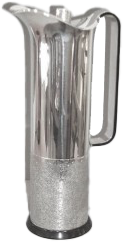
Jean Puiforcat is perhaps the best known. He came from a family that had been producing fine, traditional silver for several generations. He revolutionized their designs with his fabulous tea services, trays, flatware, and sumptuous covered vessels, often incorporating lapis lazuli, ivory and jade.
Also of major importance to the Art Deco movement were designers who chose to work in metal rather than silver, often plating it with silver, chrome or nickel for a more “industrial” feeling. Metals have the advantage of being stronger than silver, allowing thinner elements to be used for the desired effect. Foremost among these designers were Jean Despres and Maison Desny. Despres often hammered the surface of his pieces for visual interest.
The clean lines and polished surfaces of the great Art Deco designers continued to influence silver design throughout the 20th century, especially in Scandinavia.
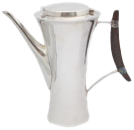
The beautiful and exciting silver and metal Art Deco objects are a wonderful investment – beautiful to look at, functional, and with good care, indestructible – a pleasure to treasure for many years.
Audrey Friedman for Primavera Gallery
This article and the images in it are copyright – protected, and may not be excerpted or reproduced in any form without the consent of Audrey Friedman at Primavera Gallery NY.


